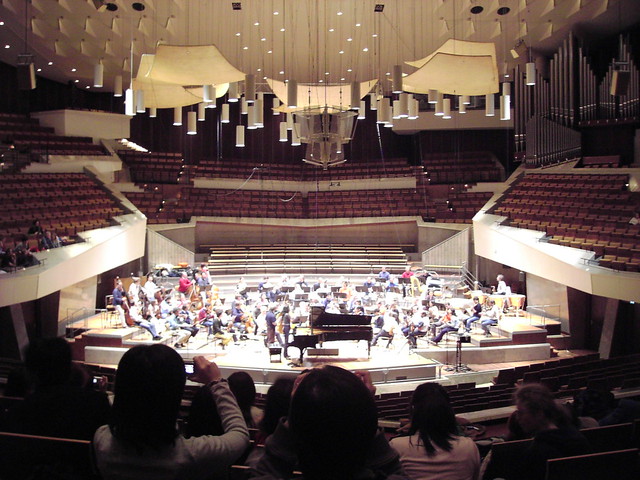One of the challenges that has come with distance learning during the COVID-19 school shutdown is figuring out how music classes can still be functional and provide some of the experiences students normally have in the classroom. Although the hundreds of students in the program can no longer play music together in person during the crisis, music directors Jason Shiuan and Michael Boitz are utilizing alternative methods for students to be part of the music program.
“What we’re trying to do is come up with ways to still create the sense of team and music-making but in this virtual world,” Shiuan said.
Boitz wants to make sure that the music students aren’t assigned busywork or assignments designed to “fill time.” So far, Shiuan and Boitz have tried to develop assignments that are “genuine” and have meaning to students.
“When I joined band and orchestra, it was because I wanted to play,” Boitz said. “I know kids aren’t in band or orchestra because they want to learn [music] theory. They really want to play and have that ensemble experience. That’s everything we do. We’re trying to come up with the most valuable playing assignments.”
The band students’ first assignment was deep listening to music. The students removed their distractions for 30 minutes to an hour so they could “listen to music for the sake of listening to music.”
The selection of pieces band students could deep listen to were “Concerto for Wind Ensemble,” by Karel Husa; “Of Our Now Day Begun” and “Shenandoah,” both by Omar Thomas; and “Symphony No. 4,” by David Maslanka.
Students wrote about what they noticed during their undistracted listening. Shiuan said that while deep-listening to music, many students were able to notice details in the music that they otherwise would not have picked up on in casual listening. Students also shared a positive outlook on this assignment. Band student junior Aelfred Moore, who plays the saxophone, bassoon, piano, flute, euphonium and percussion, enjoyed “Shenandoah.”
“It helped grow my understanding of music, and my appreciation for it as a listener, a performer, and even an aspiring composer,” Moore said.
While music classes are generally very hands-on, music teachers have integrated online resources like the teleconferencing resource Zoom and the website Berliner Philharmoniker Digital Concert Hall into their distance learning curriculums.
The Digital Concert Hall has come in handy for a variety of uses, as it gives access to archived concerts of the Berlin Philharmonic Orchestra, one of the world’s top-ranked orchestras. Around 40 concerts are broadcast live each season, and can be viewed later in the concert archives.
The music students who are not able to go on their Europe tour this year can see the concert hall they were supposed to play in via this website. Orchestra students used the Digital Concert Hall as a resource for accessing music for their deep listening assignment.
Another one of the music students’ assignments, inspired by nationally recognized music teacher and composer Dr. Tim Lautzenheiser, was for them to record a performance of a musical piece that they enjoy and send the recording to a loved one. The idea was to send a small makeshift “concert” to the people who supported them throughout their musical career and show gratitude for their support.
Orchestra student junior Isaiah Chung dedicated this assignment to two of his role models: French teacher Elaine Haggerty and his mother.
He recorded himself performing the hymn “I’m Pressing on the Upward Way” by John Keys on piano and violin for his mother and “Champs Elysees” on piano for Haggerty.
“My inspiration [was] based on the people that influence me throughout my life,” Chung said.
Despite these efforts to maintain a strong sense of community, students still find the online experience falling short of the real-life one. Moore, a member of Symphonic Wind Ensemble, Saratoga Symphony Orchestra and Jazz 1, misses the lack of a group of fellow musicians and his teachers who can “fine-tune” their students’ performances.
“I can always play any of my instruments myself, but without the rest of the group it just lacks a special something,” Moore said.
Shiuan and Boitz are continuing to try to find other methods and assignments to bring the music program into students’ lives despite social distancing.
“We’re continuing to build this sense of togetherness despite being separated,” Shiuan said. “We’re kind of moving in that direction. We’re finding ways to play and still create a sense of community.”


























